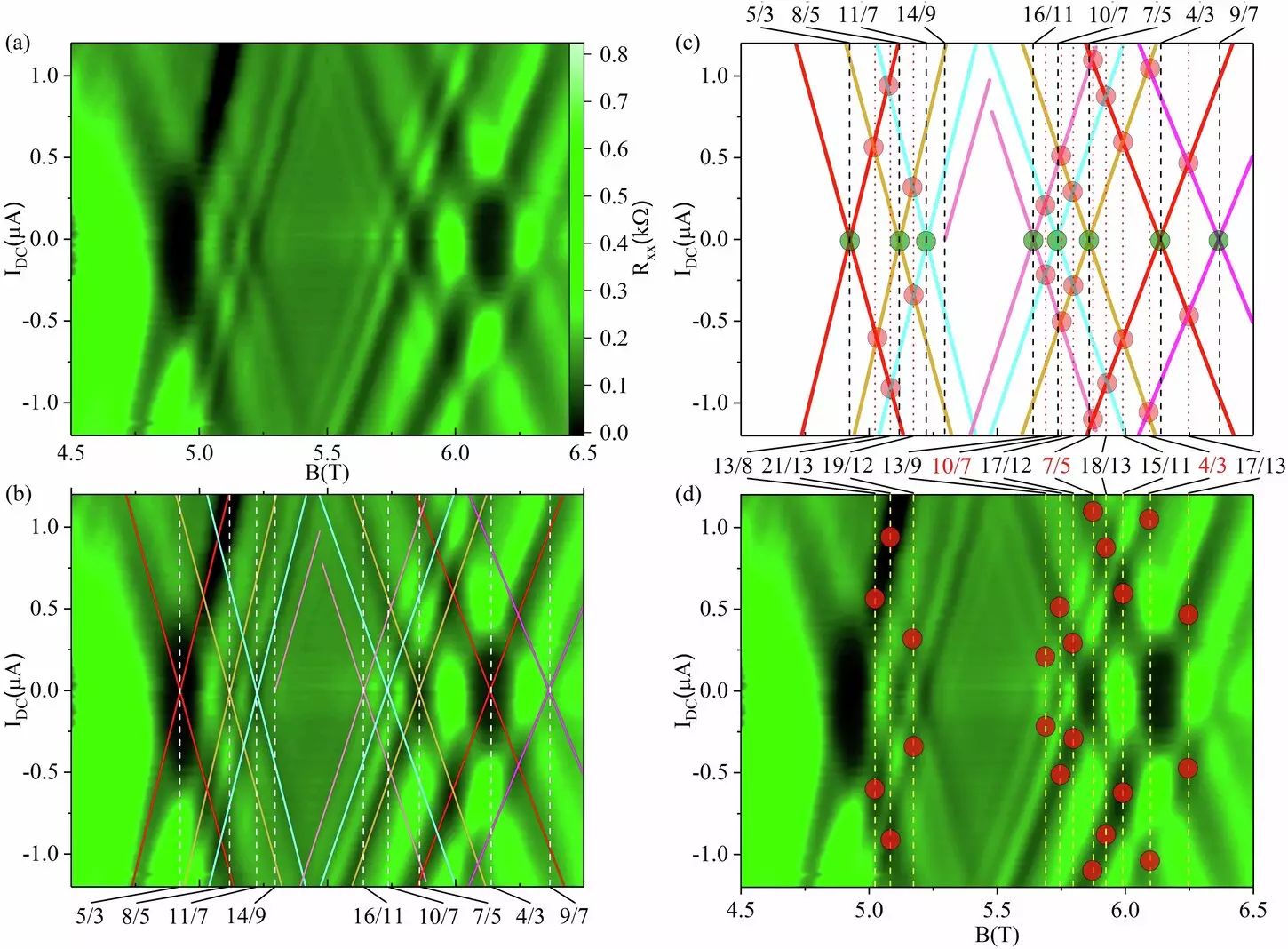In a world where the rules of physics are challenged and particles exhibit multiple personalities, the realm of flatland science opens up a whole new realm of possibilities. A recent discovery published in the journal Communications Physics by a team of researchers, led by Georgia State University Professor of Physics Ramesh G. Mani and recent Ph.D. graduate U. Kushan Wijewardena, sheds light on the enigmatic world of fractional quantum Hall effects (FQHE). Their groundbreaking studies have pushed the boundaries of traditional condensed matter physics, offering new insights into complex systems.
Since Klaus von Klitzing’s Nobel Prize-winning discovery of the quantum Hall effect in 1980, the field of condensed matter physics has continued to evolve. The subsequent discovery and understanding of the fractional quantum Hall effect in 1998 opened up a new realm of possibilities, suggesting that particles in flatland could have fractional charges. The introduction of graphene in 2010 further expanded the field, showcasing the potential for massless electrons in two-dimensional materials. These advancements culminated in the recognition of new phases of matter related to the quantum Hall effect with a Nobel Prize in 2016.
The exploration of flatland materials in condensed matter physics has paved the way for advancements in modern electronics, enabling the development of technologies such as cellphones, computers, GPS, LED lighting, solar cells, and even self-driving cars. Researchers are now focused on harnessing the potential of flatland science to create more energy-efficient, flexible, faster, and lighter-weight electronics, including novel sensors, higher efficiency solar cells, quantum computers, and topological quantum computers.
In a series of experiments conducted in extremely cold conditions with a high magnetic field, researchers at Georgia State University observed unexpected behavior in FQHE states. By applying a supplementary current to semiconductor devices made from gallium arsenide and aluminum gallium arsenide materials, they were able to explore non-equilibrium states of quantum systems and unveil entirely new states of matter. The study emphasized the importance of high-quality crystals in the success of the research, highlighting the contributions of collaborators at the Swiss Federal Institute of Technology Zurich.
The team’s experimental findings not only challenge existing theories but also suggest a hybrid origin for the observed non-equilibrium excited-state FQHEs. This innovative approach has the potential to inspire future research and technological advancements in the field of condensed matter physics. The implications of these discoveries extend beyond the lab, hinting at potential insights for quantum computing and materials science.
As researchers continue to push the boundaries of flatland science, they anticipate uncovering further nuances in quantum systems and contributing valuable insights to the field. With each experiment, the team moves closer to understanding the complex behaviors at play, paving the way for new discoveries and technological advancements. By exploring uncharted territories in flatland science, researchers are laying the groundwork for future technologies that could revolutionize data processing, energy efficiency, and the high-tech economy.


Leave a Reply